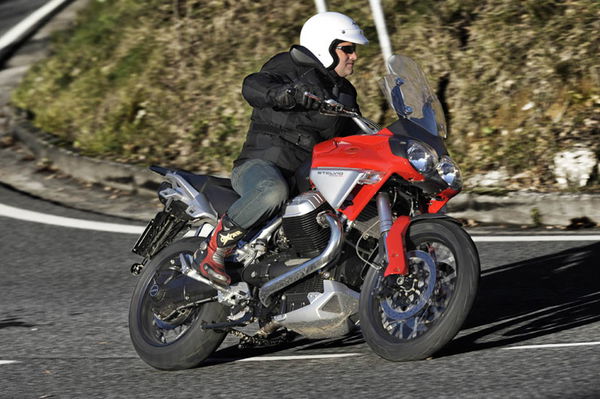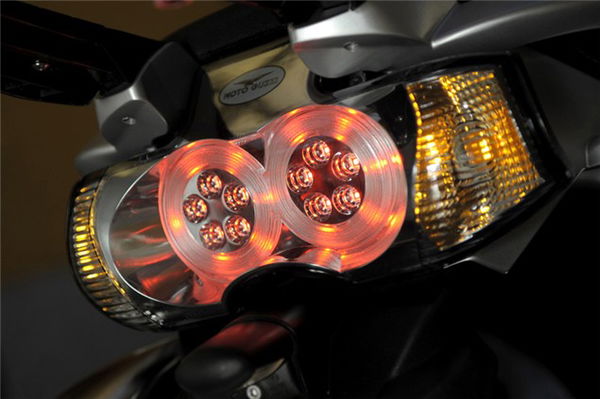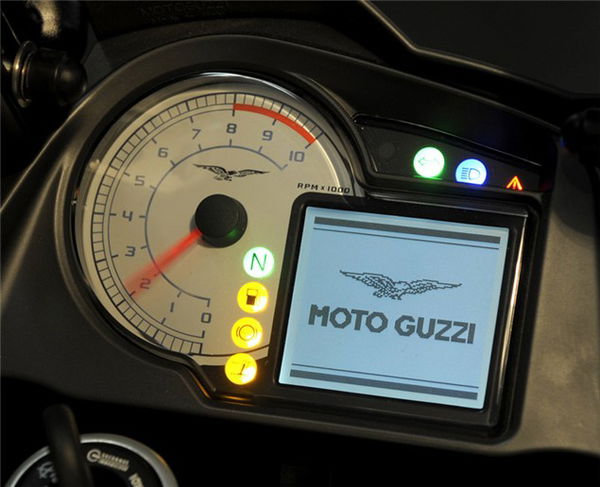First Ride: 2008 Moto Guzzi Stelvio
Despite sounding like a Greek travel rep Guzzi could be tapping a gold mine with its new adventure bike


In 2006 the BMW R1200GS (including the Adventure) was the best selling bike in the UK. It didn’t repeat the feat last year, but still sold 1,800 units putting it safely into the Top Ten. Triumph’s best-selling model is the Tiger 1050; which goes to explain why last year adventure bike sales were up 36% over the previous year. It’s the category to be seen on these days.
Cracking timing then for Moto Guzzi to launch its new Stelvio adventure bike. A competitor from Moto Guzzi isn’t going to have BMW or Triumph dealers on the blower to the Samaritans, but its arrival should certainly help not only with Moto Guzzi’s sales figures but also its image. Guzzis have been improving steadily over the last few years but they’re still a bit of a left-field choice. The range is a bit confusing, too, because the difference between models like the Griso and Breva is not obvious; so the addition of a clearly defined bike the Stelvio is good news.
The Stelvio isn’t a beautiful bike, but then the BMW GS isn’t going to make a Ducati 1098R feel like wearing a bag over its head either. There are some rather odd angles on the bike and the headlamps are a bit over the top but it’s not a pig, either. The best bit to look at is the black-painted V-twin motor. It’s a great looking engine and suits the adventure bike style. Five years ago Guzzi’s build quality was not much cop and I remember seeing a brand new California with rust already biting into its chrome. The Stelvio looks nicely finished with good quality fixings all over the bike. The only let down is the cubby hole in the right-hand side of the fairing. It’s an extremely useful bin that’s ideal for keeping a wallet for motorway tolls when touring but unfortunately the lid is a bit flimsy and on one of the test bikes kept flying open at speed. When your credit card’s blown out and landed in a field next to the autoroute you’ll have wished you’d put it in an inaccessible pocket as normal. The lid is opened via a button on the back of the left-hand switch gear. You’d never have dared add extras to Italian switchgear 20 years ago, but even if Italian volts are more reliable today it would have been better to have spent a bit more on the lid’s hinges than an electric release. Still - onwards.
Moto Guzzi might have dramatically improved the quality of its bikes but its organisational skills are still very traditional with a lot more effort going into choosing the wine on the launch than providing enough time for a thorough test route. We had long enough to judge the bike, but not to properly test the Stelvio’s seat comfort and fuel range. The latter is crucial on this type of bike. If an adventure bike can’t do at least 160 miles on a tank, and preferably 200, it is useless. The Stelvio has a four gallon tank which should give it a range of at least 160 miles.
The Stelvio’s fuel economy would be much better if Guzzi hadn’t fitted the wrong engine to the bike. The same 1,200cc 8-valve engine that’s used on the Griso is used, identical apart from a different exhaust system and some mild re-mapping. Guzzi’s people made a big point in the press conference of all the lovely low-down grunt available that perfectly suits a bike like the Stelvio. Unfortunately, I’m not sure that the person who prepared the presentation has actually ridden the bike because the one thing that it does not have is plenty of punch in the lower rpm. In fact, it’s quite a technical achievement to build a 1.2-litre V-twin that is so peaky. The engine is smooth, which is just as well because to get the bike to go you need at least 5,000rpm showing and preferably 6,000rpm to be really sure of a good launch.
The 1,200cc four-valve engine from the Breva would suit the Stelvio far better because this is a bike for touring Europe in glorious high summer, thumping along in a relaxed fashion; not winding on throttle like you’re practicing for the Weston-super-Mare beach race. The other problem with the revvy engine is that furiously winding it up upsets the suspension. The Stelvio is softley sprung, especially at the front which while good for the arse over long distances, allows all the forces from the longitudinal crankshaft and driveshaft to set up a wallow as you accelerate through the gears on, say, a curving motorway slip road. Nothing nasty, and cured or at least reduced by some experimenting with suspension set up.
Thankfully Moto Guzzi has moved away from its linked brake arrangement and makes do with a perfectly capable set of Brembos activated in the traditional way. Sensibly, ABS is an option on the Stelvio. What is not sensible is that this option will not be available until the end of the summer even though you can order your Stelvio now. Why the delay?
The Guzzi Stelvio is not as good as a GS, but it’s main attraction is that it’s not a GS. Not all of us want to own what everyone else has got. And there are quite a few of us who wouldn’t want people to think that we’re a wannabe Charley. The Stelvio is the perfect bike for someone who wants an adventure bike, will never go further off-road than the edge of a cricket pitch, and who’s after a bit of unique Italian flavour. Or someone who’s a Moto Guzzi fan who’s been waiting in the wings for the company to come up with a bike that’s attractive, well made and a fun. I’ll be surprised if it doesn’t become Guzzi’s best-selling model.














